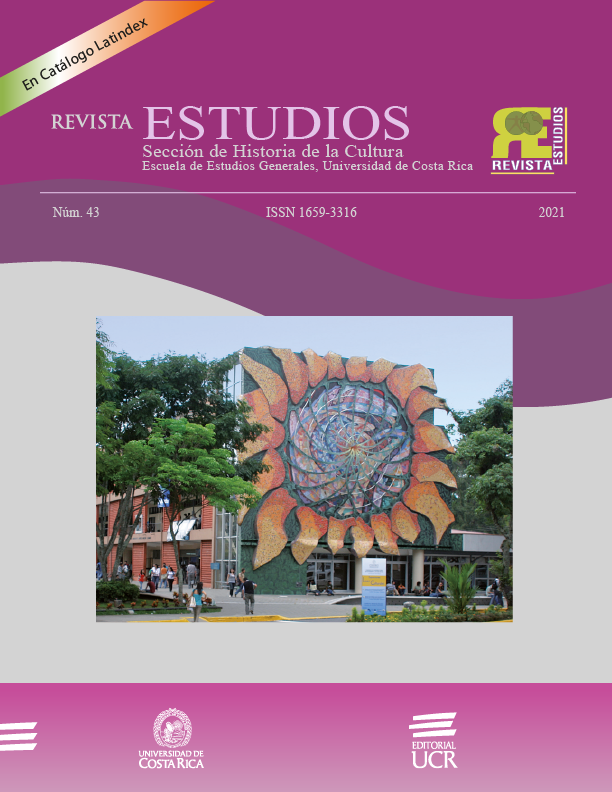Abstract
This paper describes and analyzes the uses of language, words and linguistic constructions related to paid sex, as well as the associated meanings. A review is made of the main terms used to refer to people in prostitution, people who pay for sex, and other social actors involved in this activity such as managers, entrepreneurs, managers, etc.
Among the results, we can highlight the use of terms such as prostitute, prostituida, puta, pilingui, victim, sex worker and others with different uses depending on the context in which they are used. Behind these terms there are different ideological positions, as well as meanings depending on the emic and etic perspectives. In this sense, the emic perspectives of the protagonists involved in the activity differ substantially from the etic perspective of professionals, academics, feminists, journalists and other social actors outside prostitution. While the women involved in this activity prefer whore, prostitute or sex worker, the professionals who work with them refer to them as prostituted women, women prostitutes, women in prostitution or sex workers. The use of language to refer to women in paid sex can be another form of violence against women, which must be combated according to the Istanbul Convention and the 2030 Agenda.
References
BIBLIOGRAFÍA
Agustin, L. (2009). Sexo y Marginalidad. Emigración, mercado de trabajo e industria del rescate. Madrid. Editorial Popular
Arias, M. y Giraldo, C. (2011). “El rigor en la investigación cualitativa”. Investigación y Educación en Enfermería, 29(3), 500-514
Austin, J. L. (1982). Cómo hacer cosas con palabras: Palabras y acciones. Barcelona: Paidós.
Bernstein, E. (2007). “The Sexual Politics of the New Abolitionism. differences: A Journal of Feminist Cultural Studies, 18(3),128-151. doi10.1215/10407391-2007-013
Bernstein, E. 2012. “Carceral politics as gender justice? The traffic in women and neoliberal circuits of crime, sex, and rights”. Theory and Society, 41, 233–259. https://doi.org/10.1007/s11186-012-9165-9
Bettelheim, B. (1995). Psicoanálisis de los Cuentos de Hadas. Barcelona: Crítica.
Bindman, J. (2004). “Trabajadoras/es del sexo, condiciones laborales y derechos humanos: problemas típicos y protección atípica”, en Osborne, R. (Ed.) Trabajadoras del sexo. Derechos, migraciones y tráfico en el siglo XXI. Barcelona: Bellaterra.
Charmaz, K. (2004). “Premises, Principles, and Practices in Qualitative Research: Revisiting the Foundations”. Qualitative Health Research,14(7), 976-993. doi:10.1177/1049732304266795
Choisy M. (1929). Un mes entre pecadoras. Barcelona: Editorial Bauzá.
Cobo, R. (2017). La prostitución en el corazón del capitalismo. Madrid: Los Libros de la Catarata.
Corso, C. (2004). “Desde dentro: los clientes vistos por una prostituta”, en Osborne R. (ed), Trabajado@s del sexo. Derechos, migraciones y tráfico en el siglo XXI. Barcelona: Ediciones Bellaterra. dcatoc/final_documents_2/convention_%20traff_eng.pdf.
December 2000, Palermo, http://www.uncjin.org/Documents/Conventions/
DOI: 10.1016/j.soscij.2019.04.010
Gimeno B. (2012). La prostitución. Barcelona: Bellaterra.
Gómez, A., Pérez. S., y Verduzco, R.M. (2015). El putero español: quiénes son y qué buscan los clientes de prostitución en España. Los libros de la Catarata.
Juliano, D. (2004). Excluidas y marginales: una aproximación antropológica. Madrid; Cátedra.
Lagarde, M. (2005). Los cautiverios de las mujeres: madres esposas,monjas, putas, presas y locas. Mexico. Universidad Nacional Autónoma de México.
Levenson, R.W. (1994). “The search for autonomic specificity” en P. Ekman y R.J. Davidson (eds.), The nature of emotion, 252-257, New York: Oxford University Press.
May, T., Hardcopies, A., y Hough, M. (2000). For Love or Money: Pimps and the management of sex work. London: Home Office.
Meneses-Falcón C, J Uroz-Olivares, A Rúa-Vieites (2017): “Flyers y anuncios de servicios sexuales en Madrid”. Revista Latina de Comunicación Social, 72, pp. 145 a 164. DOI: 10.4185/RLCS-2017-1158
Meneses-Falcón, C. (2021) “Living in the brothel: Participant observation in hidden contexts”, The Social Science Journal, 58:3, 271-285,
Meneses-Falcón, C., y Urío, S. (2021). “La trata con fines de explotación sexual en España: ¿Se ajustan las estimaciones a la realidad?” Revista Española de Investigaciones Sociológicas, 174, 89-108. (http://dx.doi.org/10.5477/cis/reis.174.89)
Miguel de, A. (2015). Neoliberalismo sexual. Madrid: Editorial Cátedra.
Oatley, K., y Jenkins, J. M. (1992). “Human emotions: Function and dysfunction. Approach to teaching and innovative proposal”. Annual Review of Psychology, 43, 55-85. 218
Polkinghorne, D.E. (2005). “Language and Meaning: Data Collection in Qualitative Research”. Journal of Counseling Psychology, Vol. 52, No. 2, 137–145
Protocolo de Palermo. (2000). Protocol to the Convention Against Transnational Organized Crime, The Trafficking Protocol to Prevent, Suppress and Punish Trafficking in Persons, especially Women and Children, United Nations, General Assembly, 11th Session, adopted by Resolution 55/25, signed 12-15
Raphael, J y Myers-Powell, B. (2010). “From Victims to Victimizers: Interviews with 25 Ex-Pimps in Chicago”. Chicago: A report from the Schiller DuCanto & Fleck Family Law Center of DePaul University College of Law.
Rioyo, J. (1991). Madrid, casas de lenocinio, holganza y malvivir. Madrid: Espasa Calpe.
Saiz-Echezarreta, V. (2019). “Mediatización de las controversias públicas: a propósito de la campaña sobre prostitución Hola Putero”. Revista Mediterránea de Comunicación/Mediterranean Journal of Communication, 10(1), 95-115.https://www.doi.org/10.14198/MEDCOM2019.10.1.19
Sor Juana Inés de la Cruz. (1969). Obras escogidas. México, D.F.: Espasa Calpe.
Terwiel A. (2020). “What Is Carceral Feminism?”. Political Theory, 48(4), 421-442. doi:10.1177/0090591719889946
Vanwesenbeeck I. (2017). “Sex Work Criminalization Is Barking Up the Wrong Tree”. Archives of sexual behavior, 46(6), 1631–1640. https://doi.org/10.1007/s10508-017-1008-3
Weitzer, R. (2020). “The Campaign Against Sex Work in the United States: A Successful Moral Crusade”. Sexuality Research and Social Policy, 17, 399–414. https://doi.org/10.1007/s13178-019-00404-1


